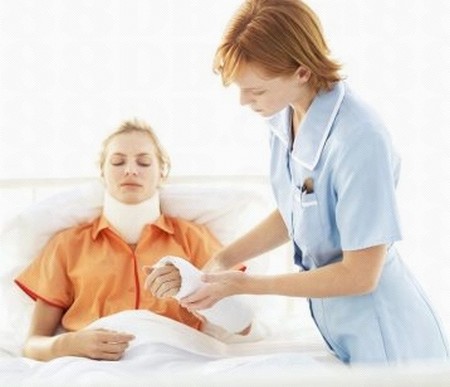People who attend hospitals or centres as day patients may do so for a variety of different reasons. Patients attending hospital may be receiving continuous daily treatment or they may be attending regularly, but intermittently, for a specific course of therapy. Patients attending a centre may also receive treatment, but this is likely to be combined with social activities. Some centres provide only a social service.
Patients receiving outpatient care or regular treatments of radio- or physiotherapy often need transport. Generally the hospital will arrange this for them.
Day surgery
Nowadays patients are often admitted for surgical procedure and discharged the same day. As with any operation, it is essential to see the hospital’s instructions about the last meal and last drink before admission are followed and any medicines by way of preparation are taken at the correct time. The family will be advised when to telephone or return to the hospital to collect the patient, and will be given instructions as to after care and follow-up visits to hospital. During the day make preparations for the patient’s return, remembering that many will wish to retire to bed as soon as they reach home. Most will appreciate a light meal. If pain-relieving tablets have been supplied by the hospital, you will need to see these are taken as instructed.
Day treatments at hospitals
Radiotherapy
This consists of directing at the affected part of the body special X-rays that destroy diseased or unwanted scar tissue while leaving the surrounding tissue undamaged. Precautions are taken so that the radiation cannot penetrate any area other than that needing treatment. Patients often attend the hospital as day patients. A course of treatment may last from four to six weeks and leave the patient very weak. Nausea is not uncommon and the patient is often reluctant to eat.
The skin over the treatment area may become red and sore, particularly if it is an area where sweating and friction occur, such as the armpit or the skin under the breast. The patient will be given very detailed instructions on how to care for the area and these must be followed exactly, as many soaps, powders and creams in common use only aggravate the condition.
As treatment continues, weakness and tiredness increase and vomiting and diarrhea may occur. Morale is low. The patient – already apprehensive because of his disease – feels the treatment is having no effect. Encouragement and support are vital at this stage. As a volunteer, you may well be familiar with the patient’s symptoms: they are the result of radiation and are less severe manifestations of those seen in radiation sickness caused by nuclear activity. The difference is that the patient is receiving controlled doses of radiation. When the treatment stops, the symptoms will disappear, so you can reassure him that his discomfort will pass.
An alternative treatment involves the intravenous use of chemical substances which destroy abnormal cells without damaging normal tissue. The patient will be treated as an inpatient, and will need a tremendous amount of help and support. A cyberknife treatment can also be considered, it focused radiation to any part of the body. Despite its name, it involves no incisions, cuts, or surgery of any type.
